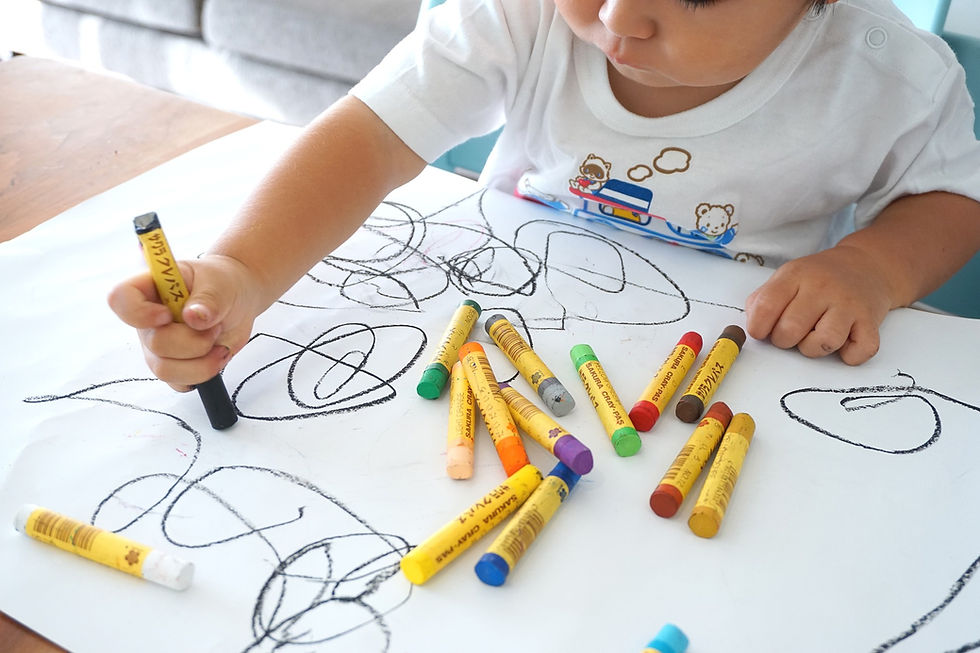How Can Parents Foster the Love of Art in Children?
- Shantala Palat
- Sep 26, 2018
- 3 min read

The importance of exposing children to art early in life is often undervalued in Indian society. In their early years, their exposure to art is restricted to drawing books and crayons.
On the other hand, scientists and child psychologists across the world are identifying and accepting the fact that by giving young children a good appreciation for art encourages exploration, self-expression, logical thinking, self-esteem, imagination and creativity in kids that help them to become a better person and succeed in life.
Early art experiences also teach kids to think openly, create new ideas, be more tolerant of others’ differences and gives them the courage to take risks.
Today in this article, contemporary painter Shantala Palat shares a few nuggets of information about fostering art appreciation in a young child during the formative years.

1. Creative Materials
Remember toddlers thrive when they create, experiment, and discover things they enjoy. Which is why parents must give kids access to open-ended art materials. Art materials in the home should be varied and abundant. Some of these materials can include - Washable paints, crayons, paintbrushes, modeling clay, chart paper, glue, coloured papers, children-safe scissors, sponges, whiteboard and markers, collage materials.
Note: Remember that the toddler art creations are generally messy and hence place their work area in the floor in a non-carpeted area of the house or cover a large area of the floor with a large plastic sheet and newspapers and train them to work only in that space.

2. Supervise and display
As toddlers tend to put things in their mouths, make sure that you use non-toxic materials and sit with your child and supervise closely during art projects . When your toddler completes his/her masterpieces, hang them around the house at his/her eye level for him/her to enjoy.

3. Do open end discussion
After each sketch, drawing, painting or any art projects, encourage your child to explore his/her creation in depth by making open-ended comments such as, “Tell me about your painting.”
Remember, it’s the process of creating art that young children learn from, not the end product. So no matter how tempting it is, never criticize or judge your toddler’s artwork.

4. Visit the Museum
An effective way to inculcate creative thinking in your kid is by exposing him or her to creative spaces. Parents can take their child to visit museums, libraries and galleries( naming a few) . At home, let your child express his thoughts and ideas on a blank sheet of paper. Introduce him or her to coloring books, illustrated comic books and interactive games that help to hone their creativity.
During the visit, encourage critical thinking in your little one by asking him to discuss what he observed during his visit to the museum. You can ask, “What do you think the artist was thinking about when he painted this picture?” Or “Why do you think that the artist selected these colors?”

5. Picture Books
Another effective way to foster the love for arts among children is to provide them with picture books (without words). Pictures can interpret stories, convey meaning, communicate ideas, and express emotion without the use of words. When you are introducing wordless books to your toddler, allow him/her to examine the pictures and come to his/her own conclusion about the story being told. One of my recent favourite wordless books is the Yellow balloon, red balloon (2013) by Ajanta Guhathakurta concept & art (Author).
It’s a beautiful book full of gorgeous drawings where you can create your own stories about the characters in the story. Then there are other good books, which focus on art and artists where the information is not preachy or heavy are the Looking At Art series by Tulika Publishers. They have covered artists like Jamini Roy, M.F.Hussain and Raja Ravi Varma.

























